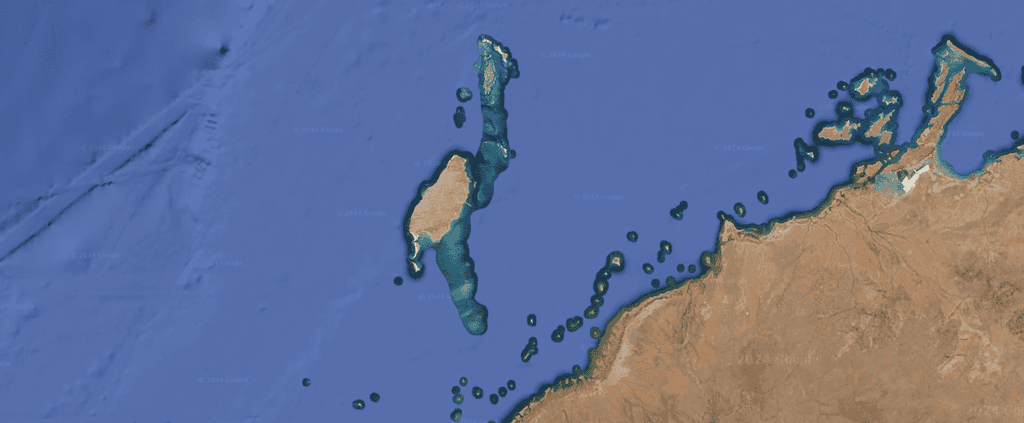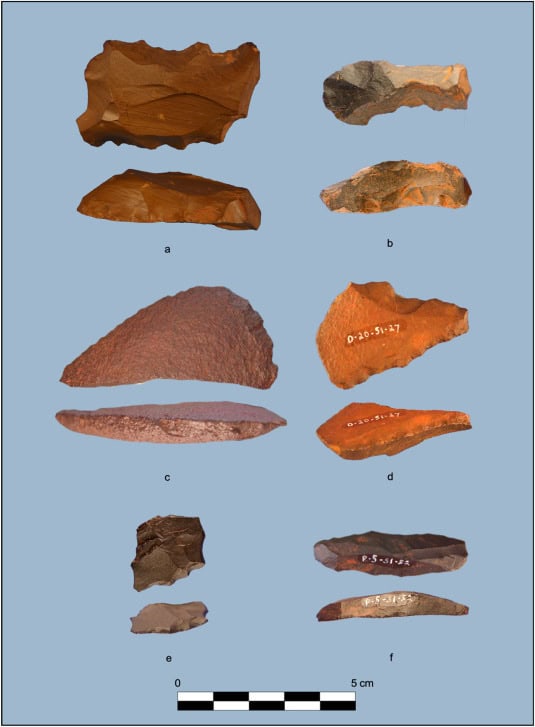Barrow Island is now an island some 50 km (31 miles) off the coast of Western Australia. But some 20,000 years ago, during the ice age, sea levels worldwide were much lower. Back then, Barrow Island was a hill overlooking a much larger coast that is now submerged.
At some point, Barrow Island became separated by the mainland. The Thalanyji people, some of whom are also co-authors on the new study, have oral histories about the islands and their inhabitants.
Researchers have now found that the island was inhabited by different groups that left behind a rich trove of artifacts and settlements. As these artifacts have been basically isolated from the rest of Australia, they’re also functionally a time capsule of these ancient civilizations.

Diverse artifacts from all around
Archaeologists have known for some time that ancient populations lived on what is now Barrow Island. The information comes especially from Boodie Cave, which is well known for significant finds showing ancient human activities and environmental conditions. But David Zeanah, an anthropologist at California State University, Sacramento and lead author of a new study, thought there must be something else.
Along with colleagues, Zeanah looked for open-air archaeological sites. They spent some three years conducting a systematic survey, analyzing over 4,400 flaked and ground stone artifacts from nearly 50 locations.
The findings were striking. Not only are the artifacts very diverse, but they are made from rocks not found on Barrow Island. These rocks are now under the sea — and have been for thousands of years.
“The artefacts we’ve found on Barrow Island show that Aboriginal people transported and exchanged stone materials from inland or places now under the sea for over 43,000 years,” write the study authors in an article on The Conversation. “Excluding one limestone source, most of these stone tools represent geological sources not found on the island.”
A thriving civilization (or two)

With so many diverse artifacts, this suggests that there was not one but several groups that inhabited Barrow Island. It gets even better: several different techniques were used to carve the artifacts.
“This was probably not like a single group of people moving seasonally across the plains,” Zeanah said. “The area is vast. The materials may have been transmitted by trade, or by Aboriginal people going from group to group. So that implies a social network.”
The logistics are also impressive. These people brought rocks from far away, stored them, and shared knowledge on how to process them.
“What that suggests to us is that people knew that there wasn’t good stone on Barrow Island, and they often brought cobbles to provision the landscape there, so that they could revisit in the future,” Zeanah said. “That shows a lot of logistics, foresight and knowing the landscape well, I believe.”
The researchers distinguished three clusters of sites that had different acquisition and processing strategies by Aboriginal people. For example, igneous stones prevalent in tools in the northern part of Barrow Island likely came from areas that are now submerged but were once part of the coastal plain. Meanwhile, in the other parts of the now-island, igneous tools were much rarer.
Northern and southwestern sites also contained more tools associated with short-term use and immediate needs, like expeditious flake tools and cobble tools. In contrast, the southeastern sites featured tools associated with longer-term settlement, such as grinding stones and more retouched tools.
Aboriginal stories told of this
The analysis supports the notion that these early populations were not just coastal foragers but also adept at exploiting terrestrial resources, which they integrated into their coastal subsistence strategies. This flexibility in resource use likely helped them navigate the changing landscapes as sea levels rose.
Despite being isolated from the mainland for much of the Holocene, Thalanyji knowledge holders recount historical utilization of Barrow Island. This history includes colonial-era fishing and forced labor in pearling operations. They also speak of Sea Country that spans the islands of the shelf and have several stories that seem to refer to Barrow Island.
Researchers invited community representatives to participate in the Barrow Island Archaeology Project. They ensured the Thalanyji could view these artifacts as vital links to their ancestors’ use of and connection to the now-submerged coastal plains.
In this context, the open-air sites on Barrow Island are key to establishing a historical link between contemporary Aboriginal communities from the interior of northwest Australia and the once extensive coastal plains, coastlines, and the remaining continental islands of the North West Shelf.
This evidence not only underscores the deep historical ties between Aboriginal communities and their maritime environment but also highlights the adaptability and resilience of these communities in face of the changing landscapes over millennia — a cultural legacy that survives despite the dramatic transformations of their lands.
The study was published in Quaternary Science Reviews.


